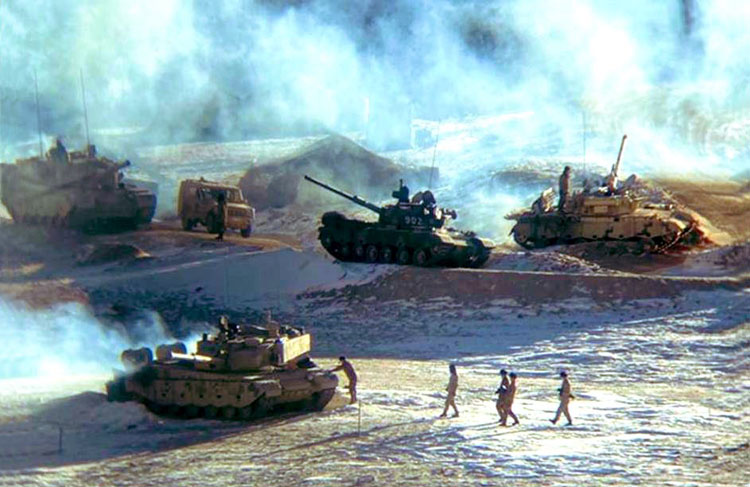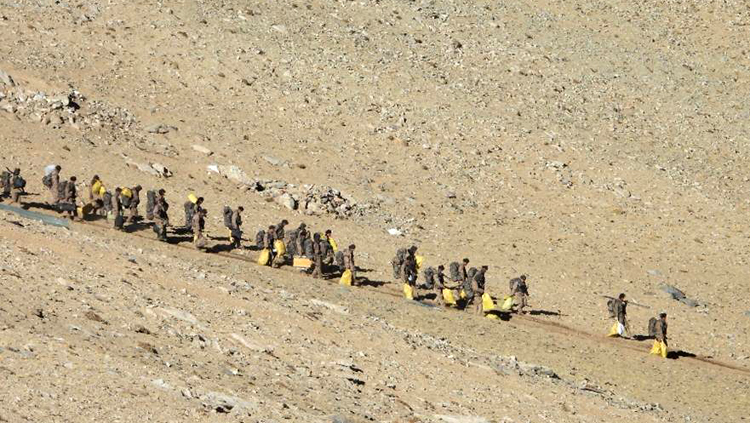INDIAN ARMED FORCES CHIEFS ON OUR RELENTLESS AND FOCUSED PUBLISHING EFFORTS

The insightful articles, inspiring narrations and analytical perspectives presented by the Editorial Team, establish an alluring connect with the reader. My compliments and best wishes to SP Guide Publications.

"Over the past 60 years, the growth of SP Guide Publications has mirrored the rising stature of Indian Navy. Its well-researched and informative magazines on Defence and Aerospace sector have served to shape an educated opinion of our military personnel, policy makers and the public alike. I wish SP's Publication team continued success, fair winds and following seas in all future endeavour!"

Since, its inception in 1964, SP Guide Publications has consistently demonstrated commitment to high-quality journalism in the aerospace and defence sectors, earning a well-deserved reputation as Asia's largest media house in this domain. I wish SP Guide Publications continued success in its pursuit of excellence.
- MoD initiates comprehensive review of Defence Acquisition Procedure 2020, pushes for defence reforms
- G7: The Swansong
- Kalinga Connect: South Asia to Polynesia
- Must Credit DRDO for Operation Sindoor, now what is next for defence R&D?
- The layered Air Defence systems that worked superbly, the key element of Operation Sindoor
- Operation Sindoor | Day 2 DGMOs Briefing
- Operation Sindoor: Resolute yet Restrained
PP-15 Disengagement is No Loss to China
Chinese side has pulled back northeast of PP-17A while the Indian troops have pulled back to PP-17. In between is the no-patrol zone which means that India troops can no more patrol up to PP-15 which was our forward PP in this sector.
 |
The Author is Former Director General of Information Systems and A Special Forces Veteran, Indian Army |

Almost two months after the 16th round of Corps Commander-level India-China talks on the border standoff held on July 17, 2022, the Ministry of External Affairs (MEA) has issued a statement on September 8, 2022, that reads, "On September 8, 2022, according to the consensus reached in the 16th round of India-China Corps Commander Level Meeting, the Indian and Chinese troops in the area of Gogra-Hotsprings (PP-15) have begun to disengage in a coordinated and planned way, which is conducive to the peace and tranquility in the border areas."
Next day on September 9, China's state media Global Times tweeted: "Chinese and Indian troops in the area of Jianan Daban have begun to disengage in a coordinated and planned manner on Thursday (September 8), according to consensus reached in 16th Round of China-India Corps Commander Level Meeting: Chinese Defence Ministry."
China has ensured the buffer zone since PP-15 in the Kungrang Nullah area provides an access route to Kongka La - a key pass leading into the Aksai Chin
The 16th round of Corps Commander-level talks over the India-China standoff in Eastern Ladakh were led by the Leh-based 14 Corps Commander Lieutenant General Anindya Sengupta and China's South Xinjiang Military District Commander Major General Yang Yin and had indicated no breakthrough.
During the 15th round of talks, held on March 11, 2022 that lasted for around 13 hours, the Indian side pushed China for the resolution of remaining intrusion areas (dubbed friction points) in Ladakh but there was no breakthrough. India had hoped that a resolution on Patrolling Point (PP) 15 in Hot Springs would be arrived at but the joint statement issued after the talks said that the "two sides carried forward their discussions from the previous round", 14th round held on January 12, "for the resolution of relevant issues along the LAC in the Western Sector". It said both sides "agreed to maintain dialogue via military and diplomatic channels to reach a mutually acceptable resolution at the earliest".

Not only was the 14th round of talks inconclusive, the 13th Corps Commander Level meeting that took place on October 21, 2021, also had ended in a stalemate, after which the Indian Army said that the "constructive suggestions" it made were not agreeable to the Chinese side, which also could not provide any "forward-looking" proposals. The Chinese later released a press statement calling India's demands "unreasonable".
It is possible that the MEA could have conveyed to the Chinese side that a one-to-one meeting between the two leaders may not be possible unless Beijing shows some progress on further disengagement
It is significant to note that the 16th round of talks were held 10-days after External Affairs Minister (EAM) S. Jaishankar had an hour long meeting with Chinese Foreign Minister Wang Yi in Bali, Indonesia, on July 7, 2022, on the sidelines of a meeting of the foreign ministers of the G20 countries. After the discussion, Jaishankar had tweeted that he had focused on specific outstanding issues in India-China bilateral relationship pertaining to the border situation. But despite this, China gave no indication of any possibility of changing the status quo in Eastern Ladakh.
How then is this sudden disengagement at PP-15 on September 8, 2022? Prime Minister Narendra Modi is likely to meet Chinese President Xi Jinping on the sidelines of the Shanghai Cooperation Organisation (SCO) meet at Samarkand, Uzbekistan on September 15-16. It is possible that the MEA could have conveyed to the Chinese side that a one-to-one meeting between the two leaders may not be possible unless Beijing shows some progress on further disengagement.
Having consolidated its defences in the intrusion areas, China is sitting pretty in Eastern Ladakh with buffer zones in Indian Territory
As per recent news, the Chinese side has pulled back northeast of PP-17A while the Indian troops have pulled back to PP-17. In between is the no-patrol zone which means that India troops can no more patrol up to PP-15 which was our forward PP in this sector. On the other hand, China loses nothing. The extent of the buffer zone has not been specified. China has ensured the buffer zone since PP-15 in the Kungrang Nullah area provides an access route to Kongka La - a key pass leading into the Aksai Chin hinterland and beyond. In the event of any possibility of hostilities, China can reoccupy PP-15 at the earliest.
As mentioned in these columns earlier, the deepest intrusion by China is at Y Junction in the Depsang area which denies our patrols to go up to PPs 10, 11, 11A, 12 and 13, even as these PPS were cited short of the Line of Actual Control (LAC). Moreover, we vacated the Kailash Range without linking it with the Chinese withdrawal from Depsang and Demchok areas. Having consolidated its defences in the intrusion areas, China is sitting pretty in Eastern Ladakh with buffer zones in Indian Territory, continuing to block traditional patrolling areas in Depsang plains and Charding Nala regions and denying traditional grazing areas to our locals in Eastern Ladakh. The PP-15 disengagement is just a small lollipop by Beijing.





